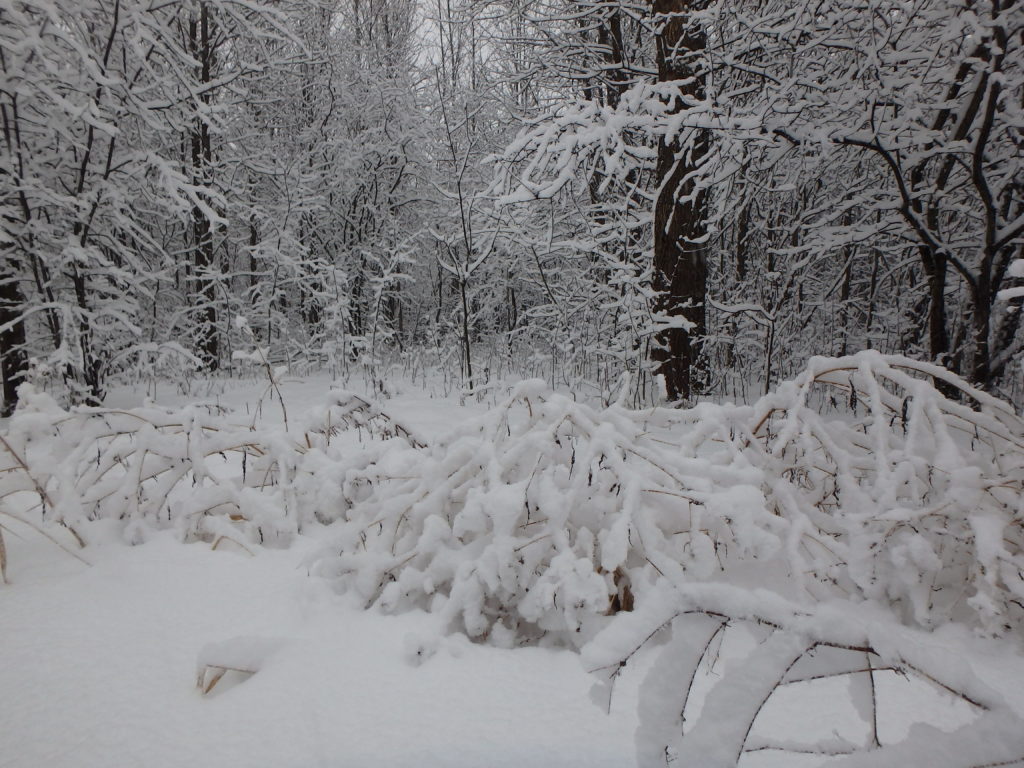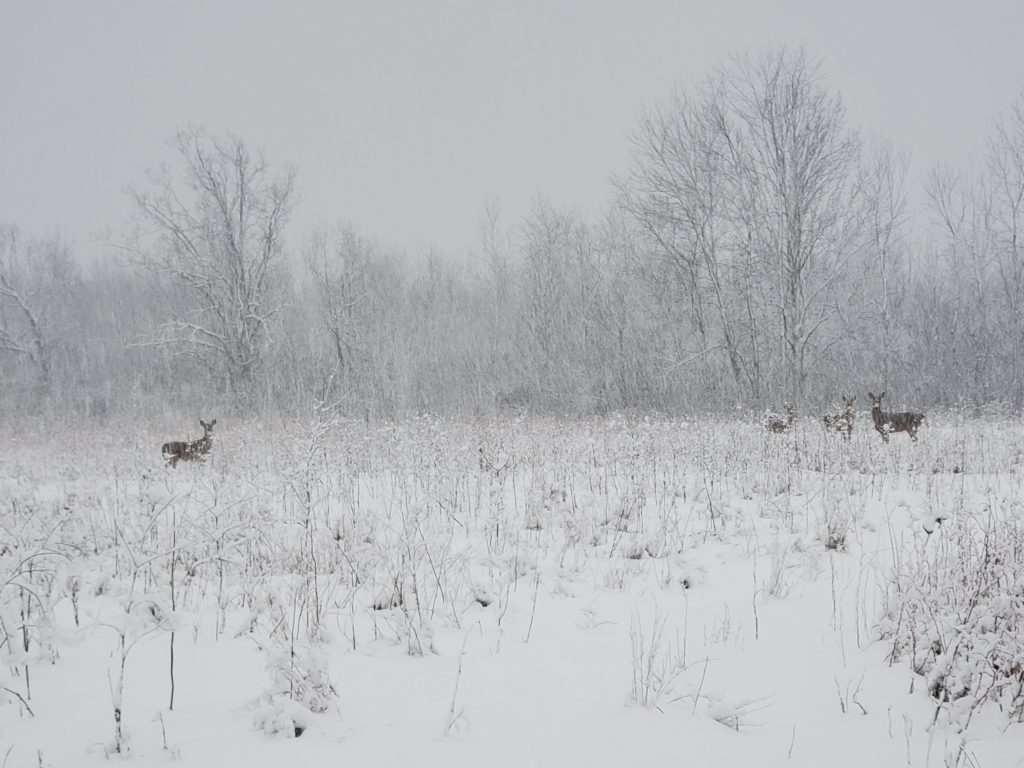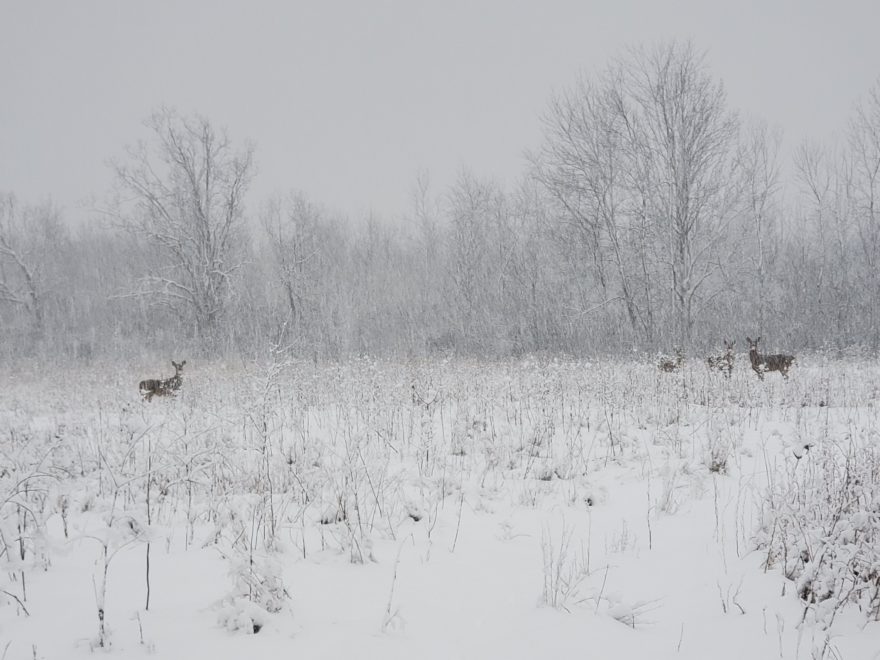A light snow began to quietly fall over the Island yesterday morning, dusting each surface as icing sugar sifted over velvety pieces of strawberry shortcake. On throughout the day, and into the darkness, snow continued to waft gently downwards. In normal times we’d have headed out into the cold for a long walk in the hushed atmosphere of snowfall, but these are anything but normal times.
Montréal Island finds itself under curfew as a consequence of a global pandemic, the (mis)handling of which by our provincial government has been a debacle. Our island city’s nearest neighbour, whose mountains we can glimpse across the lake, is the United States. There rages perhaps even greater mismanagement of this public health crisis, augmented by insurrection – and the possibility of a coup attempt during a presidential transition.
We all find ourselves in uncertain times, around the world. Concerned about our families and our friends, coaches and colleagues, acquaintances and strangers alike. Apprehensive for all those whose work puts them at risk, from the cashier at the grocery store and pharmacy to the police enforcing curfews, and to the ambulance crews and hospital teams more directly credited for saving lives. So many others who continue to toil towards a future in which we can imagine the relative safety of vaccination…
While misinformation gurus seek to further their own causes by preaching conspiracy theories and falsely reassuring the anxious that no one is at risk, science and statistics illustrate case numbers and illuminate the hard truth of death tolls. Lives lost, each representing a person with desires and goals – now never to be fulfilled. How much love and knowledge lost, to the world, forever?
To the south of Turtle Island (1) – also known as Canada – political unrest and danger have been fomented not only by these same conspiracy theorists, but also by elected officials in the United States. Politicians by trade (and treachery?) who defy democracy by refusing to accept or acknowledge the outcome of a fair and free election, led by one for whom:
truth is not an enemy so much as an irrelevance.” (2)
As evening turns to night we might imagine a calm before the storm, wondering what startling and worrisome news the next day will bring. Gazing out into the nighttime cloud-light, before snuggling into bed, my maelstrom of thoughts quieted as I saw that the icy flakes had coalesced into a fluffy white blanket over the landscape.
Rather than the calm before the storm, I realized, a snowstorm calms and soothes; it smooths over any hindrances or obstacles in its path, muffling sounds and compelling a slowing of one’s speed whether on foot or behind the wheel. Perhaps the current ‘storms’ of both virus and politics would soon also be calmed, not by snow but by reason.
My background is, after all, in philosophy; a field that views the very human gift of reason as the catalyst which has made us capable of creating and sustaining democracy across decades. Concepts such as duties, obligations, and rights are all derived from philosophical constructs of governance and society.
Observing the snow-topped trees, my thoughts turned from pandemic and politics to the forest near our home as I envisioned an enchanted winter wonderland. There’s something magical about being in the woods after a snow storm; a calm peacefulness rarely found elsewhere. At that moment, imagining the peace and tranquility of the winter woods felt to me like hope.

When I suggested to my sweetheart that we wake early this morning, to wander onto the fresh glowing carpet of snow, my husband quickly agreed. Even though today is a Saturday. Rising before dawn, we checked to see whether we’d need to don our snowshoes. “It’s not quite deep enough”, we thought.
This large wooded area begins close to our home, so we could have clambered into our snowshoes here rather than waiting until embarking upon a trail. With many paths criss-crossing this nature preserve, we expected that many others would have broken through the blanket of deep snow before us.
As we quietly entered the forest, though, we spotted only two sets of footprints leading off into the snow; one human, one canine. After a few minutes’ hike we saw a woman walking in the distance, walking towards us from the opposite direction. Once her adorable border collie had bounded closer to us, I realized that this other early-morning walker was someone I knew.
Wearing a hat, with the hood of her winter coat pulled down over it, I could barely see her face under the layers – but I’d recognized the dog. “Be careful”, Christine told us ominously, “of the coyotes.” She explained that she and her dog had gone for a walk deeper into the forest the previous day, and she’d let it run off-leash.
When she suddenly heard her collie whimpering and yelping, she ran into the woods to find it and scared off “at least two coyotes” which had been attacking the dog. Her border collie, she added, might have startled a small band of coyotes as they were feeding.
Having hiked in areas with known populations of bears, the idea of a few coyotes wandering the woods wasn’t going to scare us off. Instead we were now suddenly hoping to see some of these beautiful dog-sized animals. Christine had easily scared away the coyotes, after all, and even the City of Montréal advises that:
Specialists in coyote behaviour in urban environments state that the majority of animals avoid confrontation with humans and that it is unusual for coyotes not to fear humans.” (3)
When I’d seen local coyotes in the past, they’d always been alone and quite timid around me; running off each time as soon as I’d seen them. Because these are still wild animals, though, I had checked to find out what to do if I ever encountered an apparently aggressive coyote; try to scare it away, maintain eye contact, and avoid running away from the animal.
As we said our goodbyes to Christine and the collie, and continued down the trail, my husband and I soon reached the last of their footprints in the snow. From that point onwards, each step we took into the snow proclaimed that we were the first humans to have passed that way since night had fallen.
The creatures of the forest, though, had been active. Their tracks would intersect with ours as they wove around the trees, creating patterns in their passage. The snow clung to the branches like white lace, sometimes producing a tunnel-like effect above our heads. Being alone together in the still-falling snow was as magical – and calming – as I had hoped. Hope.

This was definitely worth the price of a few hours of sleep, to be in the woods so early in the day and to feel alone in a sparkling new world. We soon chose to wander off-trail, and from then on our snowshoes would have made the going easier. At times like this, I thought to myself, sometimes a struggle is worthwhile.
Even though the existing trails were snow-covered, they had at some past point been cleared of upended trees and rocks. Our off-trail route entailed struggling at times over downed trees and large rocks, invisible under the blanket of snow. It’s hard going, hiking in snow that rises halfway to your knees.
An hour or so into our snow-hike we spied a ridge surrounded by a denser patch of trees, through gaps in snow that was now falling more thickly. We’d take a break there for a few moments, we quietly agreed, to rest our legs under the shelter of those trees. Then we’d head home, following the crevasse that our footsteps had created in the snow cover.
There was a small gap in the trees covering the ridge, which seemed to lead to a forest meadow. Intrigued, we took a few additional steps forward into the deeper snow of the gulley at the base of the rise so that we could see into the clearing.
We were in for a beautiful surprise. A small wild herd of four or more white-tailed deer had congregated in the glade. As one, we stopped, frozen in our tracks. For almost a minute the deer gazed directly at us, and we at them. Softly, softly, I slid my phone out of my pocket and was able to snap a hurried photo.

Whether these gorgeous creatures heard the click of my phone-camera, or had decided that we might be a threat for some other reason, they bounded away. Drifts of white rose from their hooves as they leapt through the snow.

We remained still, mesmerized by the sight of these wild animals, with smiles on our faces and happiness in our hearts. It felt like a gift, this silent moment of wonder we had spent face-to-face with the deer. Our tired legs suddenly forgotten, we turned back and headed for home.
The wind had picked up and we’d need motion to keep us warm. Constantly looking back over my shoulder, as though the deer would have followed our path, I’d see my sweetheart’s happy face reflecting mine. We’d blazed our own trail through the snow with coyotes in mind, from Christine’s adventure the previous day, and had seen deer instead.
It didn’t matter; we were thrilled to have seen any wild life at all through the tumbling cascade of sparking flakes. Someday maybe we’ll see a band of coyotes, and until then it’s enough to know that they’re there.
The forest gave us another gift, though, and it’s this; while plowing my legs through the icy fluff, alone together in the forest, my thoughts hadn’t once turned to current events. Neither pandemic nor politics were on my mind, captivated instead by the raw beauty and power of nature.
As always, thanks so much for stopping by. I wish you moments of peace and serenity, of hope and joy – and unexpected happy surprises to brighten your day. Stay safe, keep well, and look after yourself.
References
(1) Turtle Island represents Canada, as: “Settlers’ renaming of Turtle Island to North America is reflective of the anglicization (modification of non-English words into English) of Indigenous place names and stories.”
Amanda Robinson; updated by Michelle Filice. Turtle Island. The Canadian Encyclopedia. 06 Nov 2018. Online. Accessed 16 Jan 2020:
https://www.thecanadianencyclopedia.ca/en/article/turtle-island#:~:text=Turtle%20Island%20is%20the%20name,an%20icon%20of%20life%20itself
(2) Quinta Jurecic. Can a president who disregards the truth uphold his oath of office? The Washington Post. 27 Jan 2017. Online. Accessed 16 Jan 2020:
https://www.washingtonpost.com/posteverything/wp/2017/01/27/can-a-president-who-disregards-the-truth-uphold-his-oath-of-office/
(3) Ville de Montréal (City of Montréal). Coexisting with coyotes in Montréal: An intriguing animal that is increasingly present. Ville de Montréal. Website, undated; Ville de Montréal; Large Parks; Biodiversity; Living in harmony with wildlife; Coexisting with coyotes in Montréal. Accessed 16 Jan 2021:
https://ville.montreal.qc.ca/portal/page?_pageid=8797,142866699&_dad=portal&_schema=PORTAL

